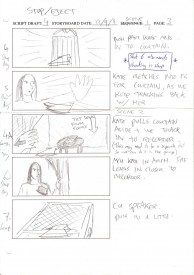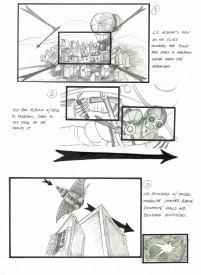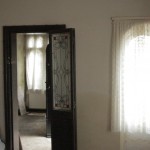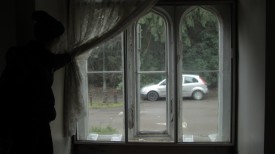
Following our positive recce of Newstead Abbey last month, we returned there yesterday, this time with new crew members Benjamin Maier (director of photography), Tom Walsh (first assistant director) and designer Amy Nicholson’s assistants Anya and Charlotte. It was an opportunity for Ben to assess the power, lighting, lens and grip requirements, for Tom to consider the logistics of working in the place, and for the art department to take measurements.
Amy and her team are sinking their teeth into the project. Initial ideas of a single feature wall which would be re-wallpapered for each of the film’s four time periods have expanded into full-blown redecoration of the room. This will create a whole different mood and palette for each period and really up the production values.
After leaving the gatekeeper’s cottage, we drove up to the lake to show Ben where the waterside scenes would take place. His immediate observation, which had escaped me on the previous recce because I was wearing my director’s hat, was that it was in the worst possible orientation to the sun: the actors would be flatly lit. We walked around the lake to a cool Victorian folly that looked like part of a miniature castle. Here the light would strike from a better angle, and indeed it was a better location in every respect except for one. I can’t tell you what that one is because it would give away the ending of the film.
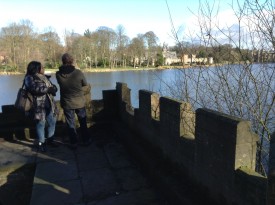
This recce was my first chance to use Artemis, a virtual director’s viewfinder app which I recently purchased. At £20.99 it’s very pricey, but where it scores over other, cheaper viewfinder apps is in its vast array of cameras you can choose from. You don’t have to worry about calculating crop factors; you simply select your camera from the menu, along with the lenses you have available, and Artemis shows you the field of view you’ll get with each one. On the wide end it’s limited by the iPad camera’s lens length, which in terms of a Super-35mm sensor at 16:9 is equivalent in height to a 22mm lens and in width to about 25mm, but you can purchase an optional wide angle lens adaptor to get around this. I have yet to use the app’s more advanced features, but it’s certainly cheaper than a real director’s viewfinder, and much more convenient than carting a DSLR and lenses around, which is what I did on the first recce.

In other areas of preproduction, I’ve had initial Skype chats with the two lead actors, which led to some suggestions for little additions to the script, and I’ve been continuing to watch genre films for inspiration, taking in The Silence of the Lambs, The Woman in Black (2012) and The Innocents lately.
